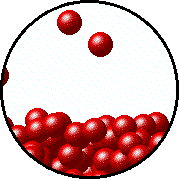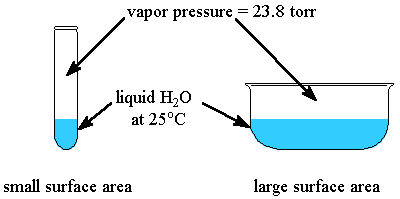Solutions lab
session
During this session you will visit a number of areas
of knowledge that you have used before – precision measurements, properties of
substances, molarity, molality. You will also be introduced to ideas such as
the conservation of mass and additive/non-additive volumes. As you will be
measuring a number of different masses, you should try to use the same set of scales for each
measurement.
Firstly, complete the blank spaces in
the questions below. I have provided enough information to complete all
answers.
Secondly, make a blog page for this
practical that uses the information to discuss the following points (explain
and give examples to support your discussion):
- Is mass always conserved?
- Is volume always conserved?
- What are molality and molarity?
Firstly, complete the blank spaces in
the questions below. I have provided enough information to complete all
answers.
Secondly, make a blog page for this
practical that uses the information to discuss the following points (explain
and give examples to support your discussion):
- Is mass always conserved?
Mass is not conserved in chemical
reactions. The fundamental conservation law of the universe is the conservation
of mass-energy. This means that the total mass and energy before a reaction in
a closed system equals the total mass and energy after the reaction. According
to Einstein’s famous equation, E = mc2, mass can be transformed into
energy and energy can be transformed into mass.
- Is volume always conserved?
Volume can be approximately conserved in
systems that have approximately constant density fluids. These include gasses
at almost constant temperature and pressure or most liquids with not very
extreme pressure ranges and constant temperature (since many liquids are almost
incompressible over small pressure ranges. But, in reality, everything is
compressible and changes density with temperature changes, so the assumption of
conservation of volume is always a simplifying approximation of reality.
- What are molality and molarity?
Molarity is defined as the number of
moles of solute per liter of solution. This means that if you have a 1 M
solution of some compound, evaporating one liter will cause one mole of the
solute to precipitate.
Molality is defined as the number of
moles of solute per kilogram of solvent. To make a 1 m solution, you'd take one
mole of a substance and add it to 1 L of solvent. As a result, the final volume
of a 1 m solution will be somewhat more than 1 L.
Notice the subtle difference between the
definition of molarity and the definition of molality. The former
expresses the concentration of a
solution as a ratio of solute to solution, while the other expresses the
concentration of a solution as a ratio
of solute to solvent.
Molality = moles of solute per kilogram
of solvent.

Molarity = moles of solute per liter of
solution.

1.
Working out the volume of 2.5 g sodium
chloride using cyclohexane.
a. Measure 3 mL of cyclohexane with a
pipette and pour it into a dry measuring cylinder.
Weigh the cylinder with the cyclohexane: ___73.50g__.
Weigh 2.50 g of sodium chloride and
place it in the cylinder as well.
Weigh the whole apparatus: ___76.00g_.
Does the total mass equal the masses of
the different parts? ____yes____.
A French scientist named Lavoisier
stated that “matter cannot be created or destroyed, so
mass is always conserved”. Does your data agree (approximately) with this statement? ____yes____.
b. Why does sodium chloride not dissolve in
cyclohexane (Hint: which kind of
substance are they – ionic, covalent (organic) or metallic)?
Cyclohexane is a very non polar solvent
and doesn’t have strong enough dipole. And sodium chloride has a very strong
dipole because it is an ionic compound.
Water can dissolve NaCl because oxygen
has a strong dipole moment and can stabilize/coordinate the Na+ and Cl- ions.
As it does not dissolve, we can work out
the volume of the salt by measuring the change in volume of the mixture:
What was the initial volume of
cyclohexane? 3ml .
What is the final volume (after adding
the salt)? __4.5mL_.
What is the volume of the sodium
chloride? _____1.5ml___.
2.
Is mass conserved when 2.5 g of salt is
dissolved in water?
Weigh a clean, dry 25 mL measuring
cylinder: __70.00g_.
Take 10 mL of water with a pipette and
pour it in the cylinder.
Weigh it again, now with the water: __80.00g_.
What
is the mass of the water? ___10.00g_____.
What should the mass of water be per
gram? (use the internet) ___1g/ml_____.
Weigh 2.50 g of sodium chloride. Add it
to the water and dissolve it.
Weigh the whole apparatus: __82.50g_.
Does
the total mass equal the masses of the different parts? ____Yes____.
Is mass conserved? ____Yes____.
What is the final volume of the
solution? __11.0mL__.
3.
Is volume ´additive´ (can we just add
the individual volumes to get the final volume) when 2.5 g sodium chloride is
dissolved in water?
What was the initial volume of water in
part 2? __10mL_.
What volume should be taken up by the salt
solution? ___12.5ml_____.
What is the actual final volume of your
sodium chloride solution? __11.mL__.
Is there a difference between your
answer and what you predicted? Explain why there is or might be:
Yes it changes because it dissolves in
water, and when it dissolves the volume changes.
4. Work out the molarity and molality of the sodium chloride solution:
Molarity, M (mol/L) = number of moles of
solute ÷ volume of solution (L)
Calculate the molarity of your sodium
chloride solution (in water):
Volume= 11ml
Molarity/Concentration= 2.50 mole per
liter.
Molarity:
2.5/58=0,043g/mol
0,043/0,011=3.9mol/L
Molarity in water:
12,5g/76=0,164g/mol
0.164/0.011=14.9mol/L
Molality,
m (mol/kg) = number of moles ÷ mass
of solvent (kg)
Calculate
the molality of your sodium chloride solution (in water):
0.043/0.01=4.3mol/kg
- Bonus questions
·
Why is it suggested to use the same set
of scales for each measurement?
It is suggested to use the same set of scales for each measurement to
compare the results and prove hypothesis.
·
What are “colligative properties”?
Colligative properties are properties that can only be measured for
solutions and it depend on the ratio of the number of particles of solute and
solvent in the solution, not the identity of the solute.
Bibliography:
- Chem.purdue.edu.
2014. Vapor
Pressure. [online] Available at:
http://www.chem.purdue.edu/gchelp/liquids/vpress.html [Accessed: 12 Mar 2014].
- Environmentalchemistry.com. 2014. Molarity,
Molality and Normality (EnvironmentalChemistry.com). [online] Available at:
http://environmentalchemistry.com/yogi/chemistry/MolarityMolalityNormality.html
[Accessed: 12 Mar 2014].
- Princeton.edu. 2014. Vapor pressure. [online] Available at:
http://www.princeton.edu/~achaney/tmve/wiki100k/docs/Vapor_pressure.html
[Accessed: 12 Mar 2014].
- Science.uwaterloo.ca. 2014. Intermolecular
Forces. [online] Available at:
http://www.science.uwaterloo.ca/~cchieh/cact/c123/intermol.html [Accessed: 12
Mar 2014].
- Answers.yahoo.com. (2014). Is volume conserved or can it be? - yahoo answers. [online] Retrieved from: http://answers.yahoo.com/question/index?qid=20090923032810AA2TAZW [Accessed: 11 Mar 2014].
- Environmentalchemistry.com. (2014). Molarity, molality and normality (environmentalchemistry.com). [online] Retrieved from: http://environmentalchemistry.com/yogi/chemistry/MolarityMolalityNormality.html [Accessed: 11 Mar 2014].
- Lightandmatter.com. (2014). Conservation of mass and energy. [online] Retrieved from: http://www.lightandmatter.com/html_books/7cp/ch01/ch01.html [Accessed: 11 Mar 2014].









